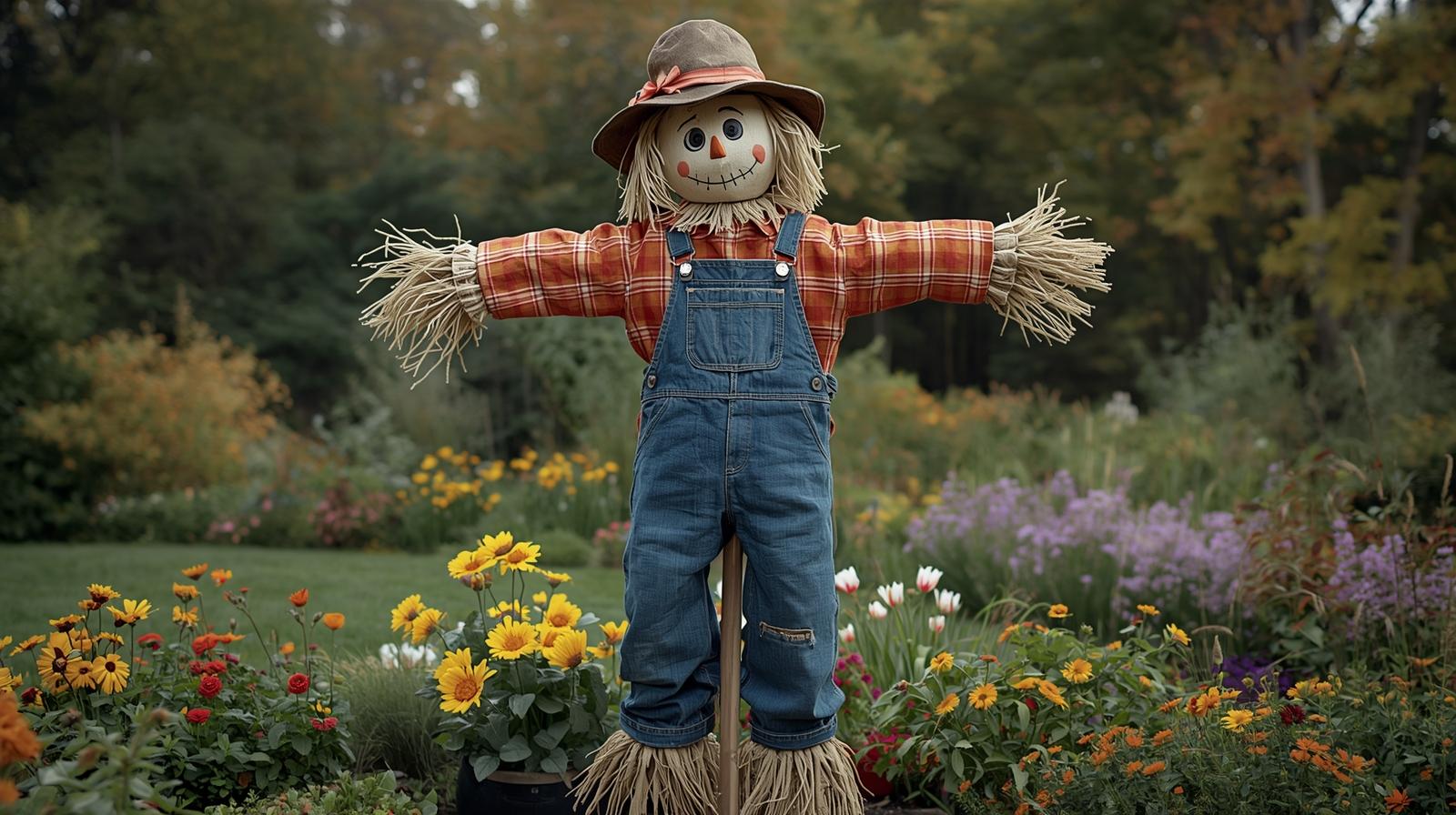
From Fields to Frights
When you picture fall, a few images instantly pop into mind—pumpkins, crunchy leaves, spooky movies, and scarecrows propped up in front yards. But before they became a Halloween staple, scarecrows had a very practical job: protecting crops. Their journey from humble farm tools to spooky symbols is a fascinating story that weaves together history, folklore, and tradition.
Ancient Beginnings
The first scarecrows weren’t made of straw at all. Ancient Egyptians set up wooden frames along the Nile to guard wheat fields from flocks of hungry quail. In Japan, farmers used kakashi, scarecrow-like figures stuffed with rags and sometimes even lit on fire to scare away animals. Across Europe, straw-stuffed human shapes became a common sight, designed to trick crows and other birds into thinking people were watching the fields.
The idea was simple: create something that looked just human enough to keep pests at bay. But as time went on, these figures began to represent more than just farm protection.
Symbolism and Superstition
By the Middle Ages, scarecrows were tied to folklore and superstition. Farmers often gave them names or even dressed them in old clothes, blurring the line between tool and talisman. In some cultures, scarecrows were seen as protectors not only of crops but also of households, guarding against evil spirits.
Of course, not everyone found them comforting. Their blank faces and lifeless forms sparked unease, feeding ghost stories and superstitions. The scarecrow slowly shifted from a helpful guardian to a symbol of something eerie—something watching when no one was there.
The American Farm Tradition
When European settlers came to America, they brought scarecrow traditions with them. Native American tribes already had their own versions, like using menacing carved figures to protect corn. Over time, the classic American scarecrow took shape: straw-stuffed, floppy-armed, and stationed in cornfields.
As farming methods improved and fewer people relied on scarecrows, their role became more symbolic than practical. By the 19th century, scarecrows were showing up in children’s stories, art, and festivals.
Scarecrows in Pop Culture
The scarecrow’s transformation into a cultural icon accelerated in the 20th century. L. Frank Baum’s Scarecrow of Oz (1900) gave the figure a friendly, lovable twist. But Hollywood and literature also leaned into the darker side: think creepy farm fields in horror movies, or haunting scarecrow legends whispered around campfires.
By the time Halloween decorations became popular in the mid-1900s, scarecrows were ready-made for the holiday. They fit perfectly with the themes of harvest, autumn, and a touch of the macabre.
Why Scarecrows Fit Halloween So Well
So why did scarecrows stick as a Halloween icon? A few reasons stand out:
- Harvest Connection – Halloween falls at the end of harvest season, and scarecrows are rooted in that agricultural tradition.
- Uncanny Valley Effect – They look human… but not quite. That eerie “almost alive” feeling makes them naturally creepy.
- Folklore and Fear – Their history as both protector and potential omen makes them a perfect fit for spooky storytelling.
- Decorative Appeal – With straw, plaid shirts, and floppy hats, they balance festive fall charm with just the right amount of spook.
From Guardian to Ghoul
Today, scarecrows are everywhere come October. They sit smiling on porches, tower menacingly in haunted corn mazes, and even star in horror films. Their journey is complete—from practical farm tool to enduring Halloween icon.
Next time you see one propped up in a yard or a field, remember: behind that stitched smile lies centuries of history, superstition, and tradition.
Final Thoughts
The scarecrow is more than a decoration. It’s a reminder of our agricultural past, our love of storytelling, and our fascination with the eerie. Whether you see them as friendly fall companions or haunting guardians of the night, one thing is certain: scarecrows aren’t going anywhere.